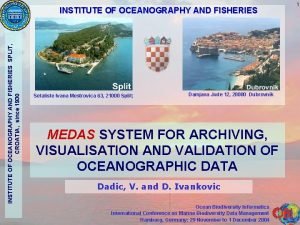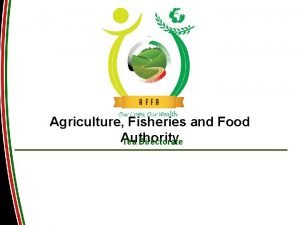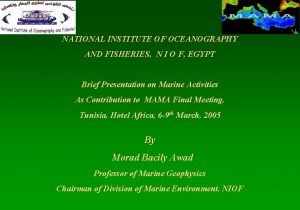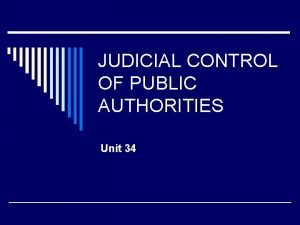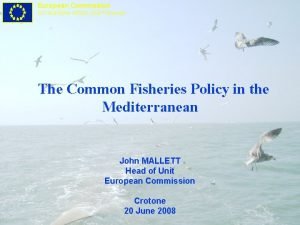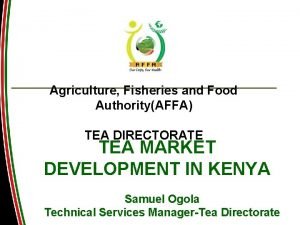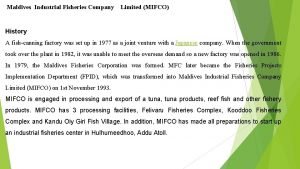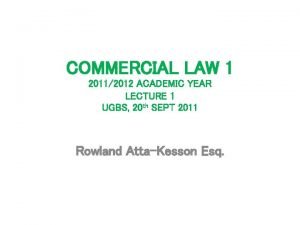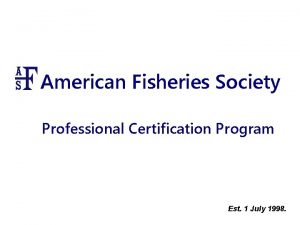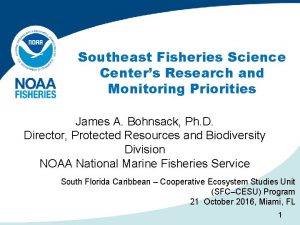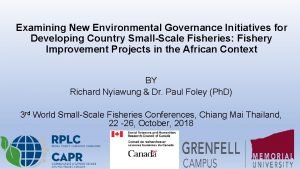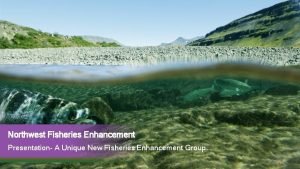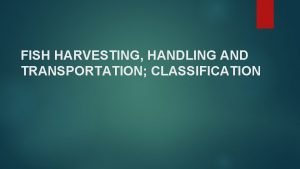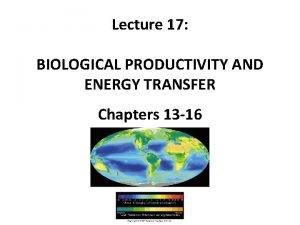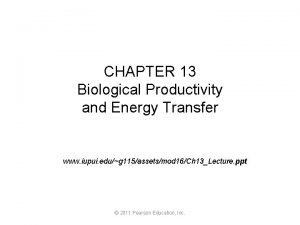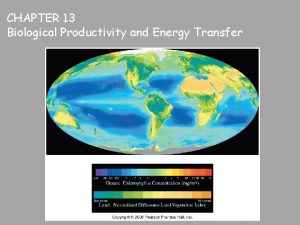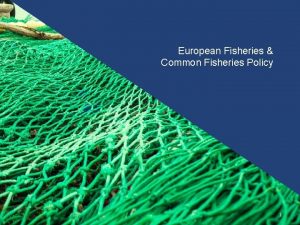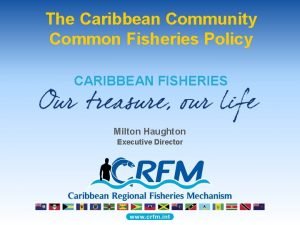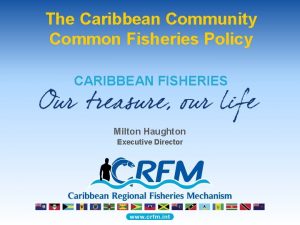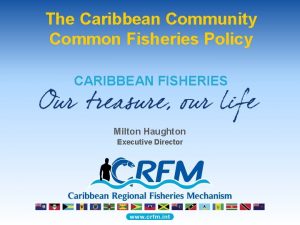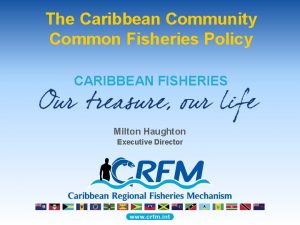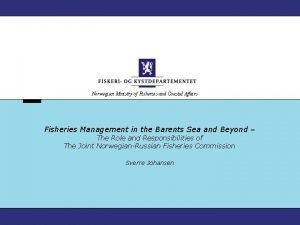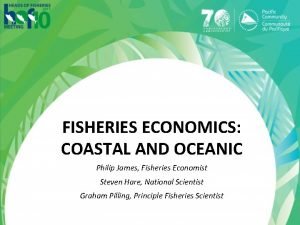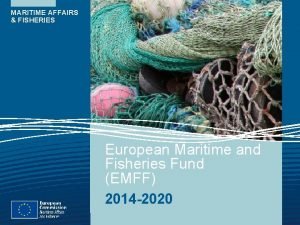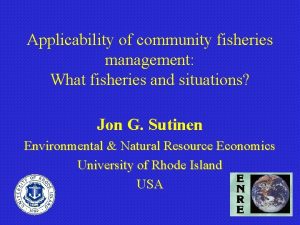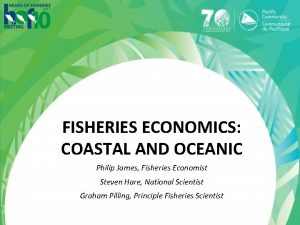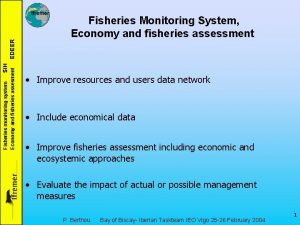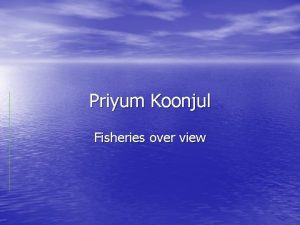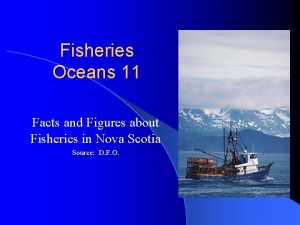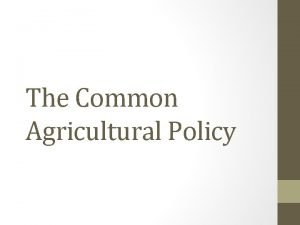The Common Fisheries Policy State of Resources and


















- Slides: 18

The Common Fisheries Policy State of Resources and Ecosystems Rainer Froese, GEOMAR, Germany 10 December 2014 Sustainable Fisheries Internal Seminar S&D PECH Working Group

Overview • • • Revisiting MSY, Fmsy, Bpa and Bmsy State of Resources State of the Ecosystems Rebuilding stocks above MSY-Level Minimizing the Impact of Profitable Fishing Summary

Revisiting MSY, F, Fmsy, Bpa and Bmsy • MSY is the maximum catch that a stock can deliver long-term • Bmsy is the biomass that can produce MSY • Bpa is the biomass below which recruitment may be compromised • F is the fraction of the fish (present during the year) that are caught • Fmsy is the F that leads to MSY and Bmsy, albeit in infinite time

Management Framework proxy 1200 Bpa SSBlim 1000 Bmsy constant recruitment o rr ati ne cru it-p ers pa w 600 200 Outside safe biological limits t re 400 co ns tan Recruits 800 0 0 100 200 300 400 500 600 Spawning stock size Froese et al. 2014

State of the Resource

State of the Resource: Stock Size • The offical reference points for safe biological limits (Bpa) are often based on the lowest stock size ever observed (Bloss) • With Bpa properly estimated, 52% of the stocks were outside of safe biological limits, and 12% were severely depleted. (Froese et al. 2014)

State of the Resource: Stock Size • • CFP requires rebuilding of stocks above Bmsy There are no official reference points for Bmsy But 2*Bpa can be used as a proxy for Bmsy In 2013, 88% of the stocks were below the proxy for Bmsy Froese et al. 2014)

State of the Resources: Fishing Mortality F • Fisheries science holds that sustainable fishing mortality Fmsy has to be less than natural mortality M • However, official estimates of Fmsy exceeded natural mortality M in 76% of the stocks • Fishing mortality in 2013 exceeded natural mortality in 73% of the stocks, including those that were severely depleted (Froese et al. 2014)

State of the Resource: Maturity • Fisheries science and common sense hold that fish shall reproduce before being caught • In 74% of the stocks, the age at first capture was below the age at first maturity (Froese et al. 2014)

State of the Ecosystems • What is the minimum stock size that still allows species to fulfil their ecosystem role as prey or predators? • Fisheries science holds that 2/3 of unexploited population size may be a lower limit for regular fish (with F ~ 0. 8 Fmsy) and ¾ may be a lower limit forage fish (with F ~ 0. 5 Fmsy) (Froese et al. in prep)

Food Web of the Western Baltic Sea 5 Sprat is a central food organisms and „natural“ predators must compete for it with the fishery. Harbour Porpoise Fishery Seals 4 Adult Cod (Sea-) Birds Juvenile Cod Adult Herring Other Demersal Fish 3 Flatfish Juvenile Herring Other Pelagic Fish Sprat Pelagic Macrofauna Zooplankton 2 Trophic Level Benthic Meiofauna Bacteria/Microorganisms Benthic Macrofauna Benthic Producers Phytoplankton Detritus / DOM Opitz & Garilao unpublished

State of the Ecosystems • What is the age and size structure that allows a population to reproduce and fulfil its ecosystem role as prey or predator? • The natural length at first maturity is about 1/3 to ½ of maximum length • The natural average length of parents is about 2/3 of maximum length • Starting fishing at about ½ of maximum length allows all fish to reproduce and leads to natural average length; it also maximizes catch and biomass for a given F (Froese et al. in prep. )

Long-term Catch as a Function of F/M and Length at First Capture Froese et al. in prep.

Biomass as a Function of F/M and Length at first Capture Froese et al. in prep.

Maximizing Profits of Fishers • Profit of fishers is the difference between the value of the catch and the cost of fishing • Cost of fishing is a function of the abundance of fish • Highest profits are obtained at about 1. 2 Bmsy • 1. 2 Bmsy is therefore the target biomass level in Australia

Follow the Money… Profit Value of catch Profit Cost Froese et al. in prep.

Summary • In 2013, about ¾ of the stocks were too small, were fished too hard, and were caught before reaching maturity • For stocks to rebuild above levels that can produce MSY, F has to be smaller than Fmsy • For minimizing impact of fishing and maximizing profits, F should not exceed 0. 8 Fmsy and length at first capture should be about half of maximum length • For forage fish (herring, sprat, anchovy, …) to fulfil their crucial ecosystem duties, F <= 0. 5 Fmsy

Thank You
 сплит institute of oceanography and fisheries
сплит institute of oceanography and fisheries Agriculture fisheries and food authority
Agriculture fisheries and food authority Institute of oceanography and fisheries
Institute of oceanography and fisheries Ministry of food agriculture and fisheries denmark
Ministry of food agriculture and fisheries denmark Allingham v minister of agriculture and fisheries
Allingham v minister of agriculture and fisheries Dg fisheries
Dg fisheries Agriculture fisheries and food authority
Agriculture fisheries and food authority Transformed and transforming resources
Transformed and transforming resources Fixed and variable resources
Fixed and variable resources Felivaru fisheries complex
Felivaru fisheries complex Buaful v construction pioneer
Buaful v construction pioneer American fisheries society certification
American fisheries society certification Southeast fisheries science center
Southeast fisheries science center Small-scale fisheries
Small-scale fisheries Northwest fisheries
Northwest fisheries Harvesting methods
Harvesting methods Ocean fisheries
Ocean fisheries Pearson prentice hall
Pearson prentice hall Biological productivity examples
Biological productivity examples
